




Related bibliographies:
Reptiles
 Snakes Snakes
 Viperidae Viperidae
North America






































































































































































































































































































































| |

Bibliography of the genus
Sistrurus (Pygmy Rattlesnakes)

(Reptilia: Serpentes: Viperidae)
Note:
In order to limit redundancy, relevant literature indexed in the related bibliographies in the left column may not have been included in this page. For a comprehensive search of literature, these bibliographies should therefore also be consulted.
Sistrurus in general
 |
Adler, K.K. 1960. On a brood of Sistrurus from northern Indiana. Herpetologica 16: 38.
Aldridge, R.D.; Duvall, D. 2002. Evolution of the mating season in the pitvipers of North America. Herpetological Monographs 16: 1-25.
Armstrong, B.L.; Murphy, J.B. 1979. The natural history of Mexican rattlesnakes. University of Kansas Publications of the Museum of Natural History 5: 1-88.
Beaupre, S.J.; Duvall, D.J. 1998. Integrative biology of rattlesnakes. Contributions to biology and evolution. Bioscience 48(7): 531-538.
Blair, C.; Sanchez-Ramirez, S. 2016. Diversity-dependent cladogenesis throughout western Mexico: evolutionary biogeography of rattlesnakes (Viperidae: Crotalinae: Crotalus and Sistrurus). Molecular Phylogenetics and Evolution 97: 145-154.
Bushar, L.M.; Maliga, M.; Reinert, H.K. 2001. Cross-species amplification of Crotalus horridus microsatellites and their application in phylogenetic analysis. Journal of Herpetology 35(3): 532-537.
Caras, R.A. 1978. Dangerous to man: the definitive story of wildlife's reputed dangers. Barrie & Jenkins, London. 327 pp.
Dobie, J.F. 1982. Rattlesnakes. University of Texas Press, Austin. 207 pp.
Dowling, H.G. 1959. Rattles and hisses and rasping scales. Animal Kingdom 62: 140-142.
Dreslik, M.J.; Hayes, W.K.; Beaupre, S.J.; Mackessy, S.P. 2017. The Biology of Rattlesnakes II. Ecouniverse Herpetological Publishing. 264 pp.
Ethan, E. 1995. Rattlesnakes. Gareth Stevens Inc., Milwaukee, Wisconsin. 24 pp.
Garman, S. 1888. The rattle of the rattlesnake. Bulletin of the Museum of Comparative Zoology 13: 259-268.
Garman, S. 1889. On the evolution of the rattlesnake. Proceedings Boston Soc. Nat. Hist. 24: 170-182.
Garman, S. 1892. The reptilian rattle. Science 20: 16-17.
Gloyd, H.K. 1940. The rattlesnakes, genera Sistrurus and Crotalus. A study in zoogeography and evolution. Chicago Acad. Sci. Spec. Publ. no. 4. 266 pp.
Hahn, D.E. 1959. Sistrurus in Lucas County. Ohio Herpetological Society Trimonthly Report 2(1): Unpaginated.
Harris, H.S.; Simmons, R.S. 1978. A preliminary account of the rattlesnakes with the descriptions of four new subspecies. Bulletin of the Maryland Herpetological Society 14(3): 105-211.
Hayes, W.K.; Beaman, K.R.; Cardwell, M.D.; Bush, S.P. 2008. The biology of rattlesnakes. Loma Linda University Press, Loma Linda, California. 606 pp.
Hoser, R.T. 2012. A reclassification of the rattlesnakes; species formerly exclusively referred to the genera Crotalus and Sistrurus and a division of the elapid genus Micrurus. Australasian Journal of Herpetology 11: 2-24.
Hubbs, B.; O'Connor, B. 2009. A guide to the rattlesnakes of the United States. Tricolor Books, Tempe. 89 pp.
Kardong, K.V.; Smith, T.L. 2002. Proximate factors involved in rattlesnake predatory behavior: a review. pp. 253-266. In: Schuett, G.W.; Höggren, M.; Douglas, M.E.; Greene, H.W. (eds.). Biology of the vipers. Eagle Mountain Publishing, Eagle Mountain. 580 pp.
Kemnitzer, J.W. 2006. Rattlesnake Adventures - Hunting with the Oldtimers. Krieger, Malabar, Florida. 224 pp.
Kemnitzer, J.W. 2011. Rattlesnake Adventures: North, South, East and West. Serpent's Tale, Lanesboro, Minnesota. 184 pp.
Klauber, L.M. 1952. Taxonomic studies of the rattlesnakes of mainland Mexico. Bulletin of the Zoological Society of San Diego 26: 1-143.
Klauber, L.M. 1956. Rattlesnakes. Their habits, life histories and influence on Mankind. Vol. 1-2. Univ. Calif. Press, Berkeley & Los Angeles. Unpaginated.
Klauber, L.M. 1971. Classification, distribution, and biology of the venomous snakes of northern Mexico, the United States, and Canada: Crotalus and Sistrurus. pp. 115-156. In: Bücherl, W. & Buckley, E.E. (eds.): Venomous animals and their venoms. Vol. 2. Venomous vertebrates (snakes, saurians, batrachians, fishes). Academic Press, New York. 687 pp.
Klauber, L.M. 1972. Rattlesnakes: their habits, life histories, and influence on mankind (2nd rev. ed.). Vol. 1-2. UCLA Press, Los Angeles. 1533 pp.
Klauber, L.M. 1982. Rattlesnakes: their habits, life histories, and influence on mankind. Abridged ed. UCLA Press, Los Angeles.
Klauber, L.M. 1984. Rattlesnakes: Their Habits, Life Histories, and Influence on Mankind. Abridged 2nd ed. University of California Press, Berkeley, California. 372 pp.
Klauber, L.M. 1997. Rattlesnakes: their habits, life histories and influence on mankind. Vol. 2. 2nd ed. University of California Press, Berkeley, Los Angeles & London. pp. 741-1533.
Klauber, L.M. 1997. Rattlesnakes: Their Habits, Life Histories, and Influence on Mankind. Vol. 1-2. (Reprint of 2nd ed.). University of California Press, Berkeley, California. 1533 pp.
Kubatko, L.S.; Gibbs, H.L.; Bloomquist, E.W. 2011. Inferring species-level phylogenies and taxonomic distinctiveness using multilocus data in Sistrurus rattlesnakes. Systematic Biology 60(4): 393-409.
Mattison, C. 1996. Rattler! A natural history of rattlesnakes. Blandford, London. 144 pp.
McDonald, M.A. 1996. Rattlesnakes. Capstone Press, Minneapolis. 48 pp.
Meik, J.M.; Pires-da Silva, A. 2009. Evolutionary morphology of the rattlesnake style. BMC Evolutionary Biology 9(35): 1-9.
Mertens, R. 1942. Die Bedeutung des Rasselns der Klapperschlangen. Natur und Volk 72(7-8): 156-163.
Moon, B.R. 2001. Muscle physiology and the evolution of the rattling system in rattlesnakes. Journal of Herpetology 35(3): 497-500.
Munro, D.F. 1947. Effect of a bite by Sistrurus on Crotalus. Herpetologica 4(2): 57.
Murphy, J.B. 2017. Rattlesnakes and zoos. Herpetological Review 48(4): 887-898.
Murphy, R.W.; Fu, J.; Lathrop, A.; Feltham, J.V.; Kovac, V. 2002. Phylogeny of the rattlesnakes (Crotalus and Sistrurus) inferred from sequences of five mitochondrial DNA genes. pp. 69-92. In: Schuett, G.W.; Höggren, M.; Douglas, M.E.; Greene, H.W. (eds.). Biology of the vipers. Eagle Mountain Publishing, Eagle Mountain. 580 pp.
Peterson, K.H. 2011. Snake cloacal gland secretions, tail moving behavior, the predator attraction hypothesis, and their proposed role in the evolution of the rattle in rattlesnakes. Bulletin of the Chicago Herpetological Society 46(3): 25-29.
Place, A.J.; Abramson, C.I. 2004. A quantitative analysis of the ancestral area of rattlesnakes. Journal of Herpetology 38(1): 152-156.
Place, A.J.; Abramson, C.I.; Ramirez, V. 2005. The rattlebox: An apparatus for studying learning in rattlesnakes. Herpetological Review 36(4): 425-427.
Quelch, J.J. 1891. The rattlesnake - the growth of the rattle. Timehri 2(5): 1-11.
Rannala, B.; Yang, Z. 2017. Efficient Bayesian species tree inference under the multispecies coalescent. Systematic Biology 66(5): 823-842
Roberts, A.R.; Quarters, J. 1947. Sistrurus in Michigan. Herpetologica 4(1): 6.
Rubio, M. 1998. Rattlesnake: portrait of a predator. Smithsonian Institution Press, Washington & London. 240 pp.
Rubio, M. 2010. Rattlesnakes of the United States & Canada. ECO Herpetological Publishing, Rodeo, New Mexico. 307 pp.
Scheidt, V. 1990. Small rattlesnakes. Vivarium (Lakeside) 2(4): 15-18.
Spinner, L. 2017. Die Klapperschlangen der USA in Natur und Terrarium. Reptilia (D) 22(124): 18-33.
Stille, B. 1987. Dorsal scale microdermatoglyphics and rattlesnake (Crotalus and Sistrurus) phylogeny (Reptilia: Viperidae: Crotalinae). Herpetologica 43(1): 98-104.
Tiebout, H.M. 1997. Caudal luring by a temperate colubrid snake, Elaphe obsoleta, and its implications for the evolution of the rattle among rattlesnakes. Journal of Herpetology 31(2): 290-292.
Wheeler, D.C. 2001. Tales from the Golden Age of Rattlesnake Hunting. E.C.O., Seymour Lansing. 169 pp.
Wittner, D. 1978. A discussion of venomous snakes of North America. Distribution and occurrence of North American snakes of the genera Crotalus, Sistrurus, and Agkistrodon. Herp 14(1): 12-17.
Wooten, J.A.; Gibbs, H.L. 2012. Niche divergence and lineage diversification among closely related Sistrurus rattlesnakes. Journal of Evolutionary Biology 25(2): 317-328.
|
Sistrurus catenatus
 |
Anonymous. 1978. Pennsylvania protects the eastern massasauga, Sistrurus catenatus catenatus. Bulletin of the Philadelphia Herpetological Society 26: 39.
Adler, K.K. 1963. The type and type locality of Crotalus messasaugus Kirtland. Journal Ohio Herpetological Society 4(1/2): 55-57.
Allen, W.B. 1956. The effects of a Massasauga bite. Herpetologica 12: 151.
Anton, T.G. 1993. Massasaugas in Lake County, Illinois: the Ryerson population. pp. 71-77. In: Johnson, B. & Menzies, V. (eds.). International symposium and workshop on the conservation of the eastern massasauga rattlesnake Sistrurus catenatus catenatus: Proceedings of a symposium and workshop sponsored by the Metropolitan Toronto Zoo, held at the Zoo from May 8-9, 1992. Metro Toronto Zoo, West Hill, Ontario. 141 pp.
Anton, T.G. 2000. Natural history notes: Sistrurus catenatus (Massasauga). Litter size. Herpetological Review 31(4): 248.
Applegate, R.D. 1995. Natural history notes: Sistrurus catenatus catenatus (Eastern Massasauga). Food habits. Herpetological Review 26(4): 206.
Atkinson, D.A.; Netting, M.G. 1927. The distribution and habits of the Massasuaga. Bulletin of the Antivenin Institute of America 1(2): 40-44.
Bailey, R.L.; Campa, H.; Bissell, K.M.; Harrison, T.M. 2012. Resource selection by the eastern massasauga rattlesnake on managed land in southwestern Michigan. Journal of Wildlife Management 76(2): 414-421.
Bailey, R.L.; Campa, H.; Harrison, T.M.; Bissell, K. 2011. Survival of Eastern Massasauga rattlesnakes (Sistrurus catenatus catenatus) in Michigan. Herpetologica 67(2): 167-173.
Bailey, R.M. 1942. An intergeneric hybrid rattlesnake. American Naturalist 76(5): 376-385.
Baker, S.J.; Anthonysamy, W.J.B.; Davis, M.A.; Dreslik, M.J.; Douglas, M.R.; Douglas, M.E.; Phillips, C.A. 2018. Temporal patterns of genetic diversity in an imperiled population of the Eastern Massasauga Rattlesnake (Sistrurus catenatus). Copeia 106(3): 414-420.
Bartman, J.F.; Kudla, N.; Bradke, D.R.; Otieno, S.; Moore, J.A. 2016. Work smarter, not harder: comparison of visual and trap survey methods for the Eastern Massasauga Rattlesnake (Sistrurus catenatus). Herpetological Conservation and Biology 11(3): 451-458.
Baxter-Gilbert, J.; Riley, J.L.; Litzgus, J.D. 2013. Natural history notes: Sistrurus catenatus catenatus (Eastern Massasauga). Diet. Herpetological Review 44(3): 526-527.
Baxter-Gilbert, J.; Riley, J.L.; Moldowan, P.D.; Litzgus, J.D. 2015. Natural history notes: Sistrurus catenatus catenatus (Eastern Massasauga) and Nerodia sipedon sipedon (Northern Watersnake). Diet and foreign object. Herpetological Review 46(1): 107.
Beauvais, T.F. 2014. Geographic distribution: Sistrurus catenatus (Eastern Massasauga). Herpetological Review 45(3): 467.
Beauvais, T.F. 2016. Geographic distribution: Sistrurus catenatus (Eastern Massasauga). Herpetological Review 47(3): 429.
Beauvais, T.F. 2016. Herpetological history: Right snake, wrong lake: Louis Agassiz's 1848 Eastern Massasauga (Sistrurus catenatus) specimen. Herpetological Review 47(4): 618-620.
Beauvais, T.F.; Adler, K. 2014. Massasaugas, Michigan, and the American origins of snakebite therapy. Herpetological Review 45(1): 74-76.
Beek, H. van de 1991. A successful breeding of Sistrurus catenatus catenatus. Litteratura Serpentium (English Edition) 11(1): 8-12.
Beltz, E. 1993. Distribution and status of the Eastern Massasauga rattlesnake, Sistrurus catenatus catenatus (Rafinesque, 1818), in the United States and Canada. pp. 26-31. In: Johnson, B. & Menzies, V. (eds.). International symposium and workshop on the conservation of the eastern massasauga rattlesnake Sistrurus catenatus catenatus: Proceedings of a symposium and workshop sponsored by the Metropolitan Toronto Zoo, held at the Zoo from May 8-9, 1992. Metro Toronto Zoo, West Hill, Ontario. 141 pp.
Bradke, D.R.; Bailey, R.L.; Bartman, J.F.; Campa, H.; Hileman, E.T.; Krueger, C.; Kudla, N.; Lee, Y.M.; Thacker, A.J.; Moore, J.A. 2018. Sensitivity analysis using site-specific demographic parameters to guide research and management of threatened Eastern Massasaugas. Copeia 106(4): 600-610.
Bradke, D.R.; Hileman, E.T.; Bartman, J.F.; Faust, L.J.; King, R.B.; Kudla, N.; Moore, J.A. 2018. Implications of small population size in a threatened pitviper species. Journal of Herpetology 52(4): 387–397.
Brumwell, M.J. 1951. An ecological survey of the Fort Leavenworth Military Reservation. American Midland Naturalist 45(1): 187-231.
Casper, G.S. 1993. Massasauga rattlesnake records collected by the Wisconsin herpetological Atlas Project, 1986-1991. pp. 80-85. In: Johnson, B. & Menzies, V. (eds.). International symposium and workshop on the conservation of the eastern massasauga rattlesnake Sistrurus catenatus catenatus: Proceedings of a symposium and workshop sponsored by the Metropolitan Toronto Zoo, held at the Zoo from May 8-9, 1992. Metro Toronto Zoo, West Hill, Ontario. 141 pp.
Choquette, J.D. 2012. Massasaugas succumb to flesh-eating fungal infections. Canadian Herpetologist 2(1): 11-12.
Choquette, J.D. 2014. The Ojibway Massasauga Recovery Project. Canadian Herpetologist 4(1): 12-13.
Colley, M.; Lougheed, S.C.; Otterbein, K.; Litzgus, J.D. 2017. Mitigation reduces road mortality of a threatened rattlesnake. Wildlife Research 44(1): 48-59
Cook, F.R. 1993. After an ice age: zoogeography of the Massasauga within a Canadian herpetofaunal perspective. pp. 19-25. In: Johnson, B. & Menzies, V. (eds.). International symposium and workshop on the conservation of the eastern massasauga rattlesnake Sistrurus catenatus catenatus: Proceedings of a symposium and workshop sponsored by the Metropolitan Toronto Zoo, held at the Zoo from May 8-9, 1992. Metro Toronto Zoo, West Hill, Ontario. 141 pp.
Costa, G.C.; Wolfe, C.; Shepard, D.B.; Caldwell, J.P.; Vitt, L.J. 2008. Detecting the influence of climatic variables on species distributions: a test using GIS niche-based models along a steep longitudinal environmental gradient. Journal of Biogeography 35(4): 637-646.
Cross, M.D.; Root, K.V.; Mehne, C.J.; Mcgowan-Stinski, J.; Pearsall, D.; Gillingham, J.C. 2015. Multi-scale responses of Eastern Massasauga Rattlesnakes (Sistrurus catenatus) to prescribed fire. American Midland Naturalist 173(2): 346-362.
Crother, B.I.; Savage, J.M.; Holycross, A.T. 2011. Case 3571. Crotalinus catenatus Rafinesque, 1818 (currently Sistrurus catenatus) and Crotalus tergeminus Say in James, 1822 (currently Sistrurus tergeminus; Reptilia, Serpentes): proposed conservation of usage by designation of neotypes for both species Bulletin of Zoological Nomenclature 68(4): 271-274.
Crother, B.I.; Savage, J.M.; Holycross, A.T. 2012. Comment on the proposed conservation of Crotalinus catenatus Rafinesque, 1818 (currently Sistrurus catenatus) and Crotalus tergeminus (currently Sistrurus tergeminus: Reptilia, Serpentes) by designation of neotypes for both species. Bulletin of Zoological Nomenclature 69(1): 62-63.
DeGregorio, B.A.; Manning, J.V.; Bieser, N.; Kingsbury, B.A. 2011. The spatial ecology of the Eastern Massasauga (Sistrurus c. catenatus) in northern Michigan. Herpetologica 67(1): 71-79.
DeGregorio, B.A.; Putman, B.J.; Kingsbury, B.A. 2011. Which habitat selection method is most applicable to snakes? Case studies of the Eastern Massasauga (Sistrurus catenatus) and Eastern Fox Snake (Pantherophis gloydi). Herpetological Conservation and Biology 6(3): 372-382.
Dodge, C.H.; Folk, G.E. 1960. A case of rattlesnake poisoning in Iowa with a description of early symptoms. Proceedings of the Iowa Academy of Science 67: 622-624.
Dovciak, M.; Osborne, P.A.; Patrick, D.A.; Gibbs, J.P. 2014. Conservation potential of prescribed fire for maintaining habitats and populations of an endangered rattlesnake Sistrurus c. catenatus. Endangered Species Research 22(1): 51-60.
Durbian, F.E.; King, R.S.; Crabill, T.; Lambert-Doherty, H.; Seigel, R.A. 2008. Massasauga home range patterns in the midwest. Journal of Wildlife Management 72(3): 754-759.
Durbian, F.E.; Lomas, B.N.; Briggler, J.; McKenzie, P.; Nagel, T. 2011. Massasauga repatriation on a restored wet prairie. Prairie Naturalist 43(3-4): 119-120.
Durblan, F.E. 2006. Effects of mowing and summer burning on the Massasauga (Sistrurus catenatus). American Midland Naturalist 155(2): 329-334.
Durian, F.E.; Lenhoff, L. 2004. Potential effects of mowing prior to summer burning on the Eastern Massasauga (Sistrurus c. catenatus) at Squaw Creek National Wildlife Refuge, Holt County, Missouri, USA. Transactions of the Missouri Academy of Science 38: 21-25.
Evans, P.D.; Gloyd, H.K. 1948. The subspecies of the Massasauga, Sistrurus catenatus, in Missouri. Bull. Chicago Acad. Sci. 8(9): 225-232.
Foster, M.A.; Bissell, K.M.; Campa, H.; Myers Harrison, T. 2009. The influence of reproductive status on thermal ecology and vegetation use of female Eastern Massasauga rattlesnakes (Sistrurus catenatus catenatus) in southwestern Michigan. Herpetological Conservation and Biology 4(1): 48-54.
Fowler, J.A. 1961. The massasauga - Michigan's only poisonous snake. News Letter Cranbrook Inst. Sci. 30: 80-91.
Fox, W.S. 1948. The swamp rattlesnake in inland southwestern Ontario. Canadian Field Naturalist 62(5): 160-161.
Fox, W.S. 1951. The little swamp rattlesnake in inland Ontario. Canadian Field Naturalist 65: 39.
Froom, B. 1964. The Massasauga rattlesnake. Ganad. Audubon 26: 78-80.
Gibbs, H.L.; Chiucchi, J.E. 2012. Inbreeding, body condition, and heterozygosity-fitness correlations in isolated populations of the endangered eastern massasauga rattlesnake (Sistrurus c. catenatus). Conservation Genetics 13(4): 1133-1143.
Gibbs, H.L.; Murphy, M.; Chiucchi, J.E. 2011. Genetic identity of endangered massasauga rattlesnakes (Sistrurus sp.) in Missouri. Conservation Genetics 12(2): 433-439.
Gibbs, H.L.; Prior, K.; Parent, C. 1998. Characterization of DNA microsatellite loci from a threatened snake: the Eastern Massasauga rattlesnake (Sistrurus c. catenatus) and their use in population studies. Journal of Heredity 89(2): 169-173.
Gibbs, H.L.; Prior, K.A.; Weatherhead, P.J.; Johnson, G. 1997. Genetic structure of populations of the threatened Eastern Massasauga rattlesnake, Sistrurus c. catenatus: evidence from microsatellite DNA markers. Molecular Ecology 6(12): 1123-1132.
Gloyd, H.K. 1955. A review of the massasaugas, Sistrurus catenatus, of the southwestern United States (Serpentes: Crotalidae). Bulletin of the Chicago Academy of Sciences 10(6): 83-98.
Goodman, J.D. 1948. A report on the reptiles collected by J.M. Shaffer from the Keokuk Area, 1863-1895. Proceedings of the Iowa Academy of Science 55: 365-366.
Greene, H.W. 1994. Systematics and natural history, foundations for understanding and conserving biodiversity. American Zoologist 34(1): 48-56.
Guthrie, J.E. 1927. Rattlesnake eggs in Iowa. Copeia 1927(162): 12-14.
Hammerson, G.A.; Valentine, L.; Livo, L.J. 1991. Geographic distribution: Sistrurus catenatus (Massasauga). USA: Colorado: Las Animas Co. Herpetological Review 22(2): 68.
Harvey, D.S. 2005. Detectability of a large-bodied snake (Sistrurus c. catenatus) by time-constrained searching. Herpetological Review 36(4): 413-415.
Harvey, D.S.; Lentini, A.M.; Cedar, K.; Weatherhead, P.J. 2014. Moving Massasaugas: insight into rattlesnake relocation using Sistrurus c. catenatus. Herpetological Conservation and Biology 9(1): 67-75.
Harvey, D.S.; Weatherhead, P.J. 2006. A test of the hierarchical model of habitat selection using Eastern Massasauga rattlesnakes (Sistrurus c. catenatus). Biological Conservation 130(2): 206-216.
Harvey, D.S.; Weatherhead, P.J. 2006. Hibernation site selection by Eastern Massasauga rattlesnakes (Sistrurus catenatus catenatus) near their northern range limit. Journal of Herpetology 40(1): 66-73.
Harvey, D.S.; Weatherhead, P.J. 2010. Habitat selection as the mechanism for thermoregulation in a northern population of massasauga rattlesnakes (Sistrurus catenatus). Ecoscience 17(4): 411-419.
Harvey, D.S.; Weatherhead, P.J. 2011. Thermal ecology of Massasauga Rattlesnakes (Sistrurus catenatus) near their northern range limit. Canadian Journal of Zoology 89(1): 60-68.
Hay, R. 1993. Summary report of management concerns and guidelines for the Eastern Massasauga rattlesnake (Sistrurus catenatus catenatus). pp. 107-108. In: Johnson, B. & Menzies, V. (eds.). International symposium and workshop on the conservation of the eastern massasauga rattlesnake Sistrurus catenatus catenatus: Proceedings of a symposium and workshop sponsored by the Metropolitan Toronto Zoo, held at the Zoo from May 8-9, 1992. Metro Toronto Zoo, West Hill, Ontario. 141 pp.
Hedgecock, K. 1993. Defensive behaviour of the Eastern Massasauga rattlesnake. pp. 99-103. In: Johnson, B. & Menzies, V. (eds.). International symposium and workshop on the conservation of the eastern massasauga rattlesnake Sistrurus catenatus catenatus: Proceedings of a symposium and workshop sponsored by the Metropolitan Toronto Zoo, held at the Zoo from May 8-9, 1992. Metro Toronto Zoo, West Hill, Ontario. 141 pp.
Hileman, E.T.; Vecchiet, J.; King, R.B. 2017. Natural history notes: Sistrurus catenatus (Eastern Massasauga). Dicephalism. Herpetological Review 48(3): 685-686.
Hill, M.T. 2011. Geographic distribution: Sistrurus catenatus (Massasauga). Herpetological Review 42(2): 244-245.
Holycross, A.T.; Anton, T.G.; Douglas, M.E.; Frost, D.R. 2008. The type localities of Sistrurus catenatus and Crotalus viridis (Serpentes: Viperidae), with the unraveling of a most unfortunate tangle of names. Copeia 2008(2): 421-424.
Holycross, A.T.; Mackessy, S.P. 2002. Variation in the diet of Sistrurus catenatus (Massasauga), with emphasis on Sistrurus catenatus edwardsii (Desert Massasauga). Journal of Herpetology 36(3): 454-464.
Hutchinson, B.; Duchesne, C.; Schryver, H. 1993. GIS analysis of habitat use by Massasauga rattlesnakes in Bruce Peninsula National Park. pp. 45-47. In: Johnson, B. & Menzies, V. (eds.). International symposium and workshop on the conservation of the eastern massasauga rattlesnake Sistrurus catenatus catenatus: Proceedings of a symposium and workshop sponsored by the Metropolitan Toronto Zoo, held at the Zoo from May 8-9, 1992. Metro Toronto Zoo, West Hill, Ontario. 141 pp.
International Commission on Zoological Nomenclature. 2013. Opinion 2328 (Case 3571). Crotalinus catenatus Rafinesque, 1818 (currently Sistrurus catenatus) and Crotalus tergeminus Say in James, 1822 (currently Sistrurus tergeminus; Reptilia, Serpentes): usage conserved by designation of neotypes for both sp. Bulletin of Zoological Nomenclature 70(4): 282-283.
Jaworski, T. 1993. The management of a 4.04 hectare field for Sistrurus catenatus catenatus, the Massasauga rattlesnake, at Cedar Bog, Champaign County, Ohio. pp. 60-63. In: Johnson, B. & Menzies, V. (eds.). International symposium and workshop on the conservation of the eastern massasauga rattlesnake Sistrurus catenatus catenatus: Proceedings of a symposium and workshop sponsored by the Metropolitan Toronto Zoo, held at the Zoo from May 8-9, 1992. Metro Toronto Zoo, West Hill, Ontario. 141 pp.
Jellen, B.C.; Kowalski, M.J. 2007. Movement and growth of neonate Eastern Massasaugas (Sistrurus catenatus). Copeia 2007(4): 994-1000.
Jellen, B.C.; Phillips, C.A.; Dreslik, M.J.; Shepard, D.B. 2007. Natural history notes: Sistrurus catenatus (Eastern Massasauga). Reproduction. Herpetological Review 38(3): 343-344.
Jellen, B.C.; Shepard, D.B.; Dreslik, M.J.; Phillips, C.A. 2007. Male movement and body size affect mate acquisition in the Eastern Massasauga (Sistrurus catenatus). Journal of Herpetology 41(3): 451-457.
Jellen, B.C.; Siegel, D.S.; Aldridge, R.D. 2010. Natural history notes: Sistrurus catenatus (Massasauga). Female sperm evacuation. Herpetological Review 41(4): 502-503.
Johnson, B. 1993. Eastern Massasauga rattlesnake conservation program at Metro Toronto Zoo. pp. 89-93. In: Johnson, B. & Menzies, V. (eds.). International symposium and workshop on the conservation of the eastern massasauga rattlesnake Sistrurus catenatus catenatus: Proceedings of a symposium and workshop sponsored by the Metropolitan Toronto Zoo, held at the Zoo from May 8-9, 1992. Metro Toronto Zoo, West Hill, Ontario. 141 pp.
Johnson, B.; Menzies, V. (eds.) . 1993. International Symposium and Workshop on the Conservation of the Eastern Massasauga Rattlesnake Sistrurus catenatus catenatus: proceedings of a symposium and workshop sponsored by the Metropolitan Toronto Zoo, held at the Zoo from May 8-9, 1992. Metro Toronto Zoo, West Hill, Ontario. 141 pp.
Johnson, B.; Menzies, V. (eds.). 1992. International Symposium and Workshop on the Conservation of the Eastern Massasauga Rattlesnake: Sistrurus catenatus catenatus. Metropolitan Toronto Zoo, West Hill, Ontario. 141 pp.
Johnson, B.D.; Gibbs, J.P.; Bell, T.A.; Shoemaker, K.T. 2016. Manipulation of basking sites for endangered Eastern Massasauga Rattlesnakes. Journal of Wildlife Management 80(5): 803-811.
Johnson, B.D.; Gibbs, J.P.; Shoemaker, K.T.; Cohen, J.B. 2016. Demography of a small and isolated population of Eastern Massasauga Rattlesnakes (Sistrurus catenatus) threatened by vegetative succession. Journal of Herpetology 50(4): 534–540.
Johnson, G.; Breisch, A.R. 1993. The Eastern Massasauga rattlesnake in New York: occurrence and habitat management. pp. 48-54. In: Johnson, B. & Menzies, V. (eds.). International symposium and workshop on the conservation of the eastern massasauga rattlesnake Sistrurus catenatus catenatus: Proceedings of a symposium and workshop sponsored by the Metropolitan Toronto Zoo, held at the Zoo from May 8-9, 1992. Metro Toronto Zoo, West Hill, Ontario. 141 pp.
Johnson, G.; Leopold, D.J. 1998. Habitat management for the Eastern Massasauga in a central New York peatland. Journal of Wildlife Management 62(1): 84-97.
Johnson, T.R.; Figg, D.E. 1993. Massasauga rattlesnake conservation in Missouri. pp. 78-79. In: Johnson, B. & Menzies, V. (eds.). International symposium and workshop on the conservation of the eastern massasauga rattlesnake Sistrurus catenatus catenatus: Proceedings of a symposium and workshop sponsored by the Metropolitan Toronto Zoo, held at the Zoo from May 8-9, 1992. Metro Toronto Zoo, West Hill, Ontario. 141 pp.
Jones, J.D.; Stuart, J.N. 2004. Observations of winter activity by Sistrurus catenatus and Coluber constrictor in eastern New Mexico. Bulletin of the Chicago Herpetological Society 39(7): 121.
Jones, P.C.; King, R.B.; Bailey, R.L.; Bieser, N.D.; Bissell, K.; Campa, H.; Crabill, T.; Cross, M.D.; DeGregorio, B.A.; Dreslik, M.J.; Durbian, F.E.; Harvey, D.S.; Hecht, S.E.; & al. 2012. Range-wide analysis of eastern massasauga survivorship. Journal of Wildlife Management 76(8): 1576-1586.
Jones, P.C.; King, R.B.; Sutton, S. 2017. Demographic analysis of imperiled Eastern Massasaugas (Sistrurus catenatus catenatus). Journal of Herpetology 51(3): 383–387
Josimovich, J.; Matthews, M.; Kingsbury, B.; Ravesi, M. 2018. Natural history notes: Sistrurus catenatus (Eastern Massasauga). Defensive behavior. Herpetological Review 49(2): 355.
Keenlyne, K.D. 1978. Reproductive cycles in two species of rattlesnakes. American Midland Naturalist 100(2): 368-375.
Keenlyne, K.D.; Beer, J.R. 1973. Food habits of Sistrurus catenatus catenatus. Journal of Herpetology 7(4): 382-384.
Keenlyne, K.D.; Beer, J.R. 1973. Note on the size of Sistrurus catenatus catenatus at birth. Journal of Herpetology 7(4): 381-382.
King, R.; Berg, C.; Hay, B. 2004. A repatriation study of the Eastern Massasauga (Sistrurus catenatus catenatus) in Wisconsin. Herpetologica 60(4): 429-437.
Kingsbury, B.A. 1998. Status of the Eastern Massasauga, Sistrurus c. catenatus, in Indiana with management recommendations for recovery. Proceedings of the Indiana Academy of Science 105(3-4): 195-205.
Knopf, S.N.; Tinkle, D.W. 1961. The distribution and habits of Sistrurus catenatus in Northwest Texas. Herpetologica 17: 126-131.
LaPointe, J. 1953. Case report of a bite from the massasauga, Sistrurus catenatus catenatus. Copeia 1953: 128-129.
Lee, J.R.; Seigel, R.A.; Durbian, F.E. 2004. Natural history notes: Sistrurus catenatus (Massasauga). Agressive behaviour. Herpetological Review 35(1): 72-73.
Mackessy, S.P.; Hobert, J.; Donoho, R.; Montgomery, C.; Waldron, K. 1996. Geographic distribution: Sistrurus catenatus (Massasauga). USA: Colorado: El Paso Co. Herpetological Review 27(1): 35.
Mantil, T. 1993. Snakes: a learning experience. pp. 94-95. In: Johnson, B. & Menzies, V. (eds.). International symposium and workshop on the conservation of the eastern massasauga rattlesnake Sistrurus catenatus catenatus: Proceedings of a symposium and workshop sponsored by the Metropolitan Toronto Zoo, held at the Zoo from May 8-9, 1992. Metro Toronto Zoo, West Hill, Ontario. 141 pp.
Marshall, J.C.; Manning, J.V.; Kingsbury, B.A. 2006. Movement and macrohabitat selection of the Eastern Massasauga in a fen habitat. Herpetologica 62(2): 141-150.
Maslin, T.P. 1965. The status of the rattlesnake Sistrurus catenatus (Crotolidae) in Colorado. Southwestern Naturalist 10: 31-34.
Matthews, M.; Josimovich, J.; Kingsbury, B.; DeGregorio, B. 2017. Natural history notes: Sistrurus catenatus (Massasauga). Habitat use. Herpetological Review 48(1): 219-220.
Mauger, D.; Wilson, T.P. 2005. Natural history notes: Sistrurus catenatus (Eastern Massasauga). Mating activity. Herpetological Review 36(3): 327-328.
McCoy, C.J.; Minckley, W.L. 1969. Sistrurus catenatus (Reptilia: Crotalidae) from the Cuatro Cienegas Basin, Coahuila, Mexico. Herpetologica 25: 152-153.
Middleton, J. 1993. The Massasauga rattlesnake Sistrurus catenatus catenatus in Wainfleet Bog. pp. 43-44. In: Johnson, B. & Menzies, V. (eds.). International symposium and workshop on the conservation of the eastern massasauga rattlesnake Sistrurus catenatus catenatus: Proceedings of a symposium and workshop sponsored by the Metropolitan Toronto Zoo, held at the Zoo from May 8-9, 1992. Metro Toronto Zoo, West Hill, Ontario. 141 pp.
Mierzwa, K.S. 1993. Habitat utilization and status of the Eastern Massasauga rattlesnake, Sistrurus catenatus catenatus, in the Chicago region. pp. 66-70. In: Johnson, B. & Menzies, V. (eds.). International symposium and workshop on the conservation of the eastern massasauga rattlesnake Sistrurus catenatus catenatus: Proceedings of a symposium and workshop sponsored by the Metropolitan Toronto Zoo, held at the Zoo from May 8-9, 1992. Metro Toronto Zoo, West Hill, Ontario. 141 pp.
Minckley, C.O.; Rinne, W.E. 1972. Another massasauga from Mexico. Texas Journal of Science 23(3): 432-433.
Minton, S.A. 1983. Sistrurus catenatus. Catalogue of American Amphibians and Reptiles 332: 1-2.
Moore, J.A.; Gillingham, J.C. 2006. Spatial ecology and multi-scale habitat selection by a threatened rattlesnake: The Eastern Massasauga (Sistrurus catenatus catenatus). Copeia 2006(4): 742-751.
Moran, T. 1993. Current status of Eastern Massasauga rattlesnakes in Michigan. pp. 64-65. In: Johnson, B. & Menzies, V. (eds.). International symposium and workshop on the conservation of the eastern massasauga rattlesnake Sistrurus catenatus catenatus: Proceedings of a symposium and workshop sponsored by the Metropolitan Toronto Zoo, held at the Zoo from May 8-9, 1992. Metro Toronto Zoo, West Hill, Ontario. 141 pp.
Nevarez, M. 2011. Geographic distribution: Sistrurus catenatus (Massasauga). Herpetological Review 42(1): 116.
Nordgren, M.; Schmidt, C.J. 2011. Geographic distribution: Sistrurus catenatus (massauga). Journal of Kansas Herpetology 38: 7.
Oldham, M.J. 1985. Life history notes: Sistrurus catenatus catenatus (Eastern Massasauga). Pattern. Herpetological Review 16(2): 57.
Parent, C.; Weatherhead, P.J. 2000. Behavioral and life history responses of Eastern Massasauga rattlesnakes (Sistrurus catenatus catenatus) to human disturbance. Oecologia (Berlin) 125(2): 170-178.
Pilgrim, M.A.; Farrell, T.M.; May, P.G.; Vollman, M.R.; Seigel, R.A. 2011. Secondary sex ratios in six snake species. Copeia 2011(4): 553-558.
Pomara, L.Y.; Ledee, O.E.; Martin, K.J.; Zuckerberg, B. 2014. Demographic consequences of climate change and land cover help explain a history of extirpations and range contraction in a declining snake species. Global Change Biology 20(7): 2087-2099.
Pope, T.E.B. 1925. Hunting Wisconsin rattlesnakes. Yearb. Publ. Mus. Milwaukee 3(1): 13-26.
Pope, T.E.B. 1927. The massasauga in Wisconsin. Yearb. Publ. Mus. Milwaukee 6: 171-180.
Pratt, P.D.; Cedar, K.; Barten, J. 1993. A remnant population of Eastern Massasauga rattlesnakes at Ojibway prairie, Windsor, Ontario. pp. 40-41. In: Johnson, B. & Menzies, V. (eds.). International symposium and workshop on the conservation of the eastern massasauga rattlesnake Sistrurus catenatus catenatus: Proceedings of a symposium and workshop sponsored by the Metropolitan Toronto Zoo, held at the Zoo from May 8-9, 1992. Metro Toronto Zoo, West Hill, Ontario. 141 pp.
Prior, K.A.; Weatherhead, P.J. 1994. Response of free-ranging Eastern Massasauga rattlesnakes to human disturbance. Journal of Herpetology 28(2): 255-257.
Ravesi, M.J.; Forzley, M.J.; Tetzlaff, S.J.; Kingsbury, B.A.; Parker, J.M. 2015. Natural history notes: Sistrurus catenatus (Massasauga). Diet. Herpetological Review 46(3): 454.
Ravesi, M.J.; Tetzlaff, S.J.; Kingsbury, B.A. 2015. Natural history notes: Sistrurus catenatus (Massasauga). Overwintering. Herpetological Review 46(3): 454.
Ravesi, M.J.; Tetzlaff, S.J.; Kingsbury, B.A. 2016. Natural history notes: Sistrurus catenatus (Massasauga). Diet. Herpetological Review 47(1): 153-154.
Ray, J.W.; King, R.B.; Duvall, M.R.; Robinson, J.W.; Jaeger, C.P.; Dreslik, M.J.; Swanson, B.J.; Mulkerin, D. 2013. Genetic analysis and captive breeding program design for the Eastern Massasauga Sistrurus catenatus catenatus. Journal of Fish and Wildlife 4(1): 104-113.
Ray, W.J. le 1930. The Rattlesnake (Sistrurus catenatus) in Ontario. Canadian Field Naturalist 44(9): 201.
Reinert, H.K.; Bushar, L.M. 1993. The Massasauga rattlesnake in Pennsylvania: continuing habitat loss and population isolation. pp. 55-59. In: Johnson, B. & Menzies, V. (eds.). International symposium and workshop on the conservation of the eastern massasauga rattlesnake Sistrurus catenatus catenatus: Proceedings of a symposium and workshop sponsored by the Metropolitan Toronto Zoo, held at the Zoo from May 8-9, 1992. Metro Toronto Zoo, West Hill, Ontario. 141 pp.
Reiserer, R.S. 2002. Stimulus control of caudal luring and other feeding responses: a program for research on visual perception in vipers. pp. 361-383. In: Schuett, G.W.; Höggren, M.; Douglas, M.E.; Greene, H.W. (eds.). Biology of the vipers. Eagle Mountain Publishing, Eagle Mountain. 580 pp.
Resetar, A. 1993. The Eastern Massasauga (Sistrurus catenatus catenatus) in Indiana: a preliminary historical survey. pp. 138-141. In: Johnson, B. & Menzies, V. (eds.). International symposium and workshop on the conservation of the eastern massasauga rattlesnake Sistrurus catenatus catenatus: Proceedings of a symposium and workshop sponsored by the Metropolitan Toronto Zoo, held at the Zoo from May 8-9, 1992. Metro Toronto Zoo, West Hill, Ontario. 141 pp.
Riley, J.L.; Baxter-Gilbert, J.H.; Litzgus, J.D. 2017. A comparison of three external transmitter attachment methods for snakes. Wildlife Society Bulletin 41(1): 132-139
Robillard, A.; Johnson, B. 2015. Edge effects on Eastern Massasauga Rattlesnakes basking in managed habitat. Northeastern Naturalist 22(1): 200-208.
Robillard, A.J. 2015. Natural history notes: Sistrurus catenatus (Massasauga). Climbing behavior. Herpetological Review 46(2): 277.
Rouse, J.D.; Willson, R.J.; Black, R.; Brooks, R.J. 2011. Movement and spatial dispersion of Sistrurus catenatus and Heterodon platirhinos: implications for interactions with roads. Copeia 2011(3): 443-456.
Rush, M.S.; Royal, S.M.; Fleharty, E.D. 1982. New county records and habitat preferences of amphibians and reptiles from the Sandsage Prairie in Finney County, Kansas. Transactions of the Kansas Academy of Science 85(3): 165-173.
Schuett, G.W.; Clark, D.L.; Kraus, F. 1984. Feeding mimicry in the rattlesnake Sistrurus catenatus, with comments on the evolution of the rattle. Animal Behaviour 32(2): 625-626.
Seigel, R.A.; Pilgrim, M.A. 2002. Long-term changes in movement patterns of Massasaugas (Sistrurus catenatus). pp. 405-412. In: Schuett, G.W.; Höggren, M.; Douglas, M.E.; Greene, H.W. (eds.). Biology of the vipers. Eagle Mountain Publishing, Eagle Mountain. 580 pp.
Seigel, R.A.; Sheil, C.A.; Doody, J.S. 1998. Changes in a population of an endangered rattlesnake Sistrurus catenatus following a severe flood. Biological Conservation 83(2): 127-131.
Seigel, S.A. 1986. Ecology and conservation of an endangered rattlesnake, Sistrurus catenatus, in Missouri, USA. Biological Conservation 35(4): 333-346.
Selous, P. 1895. Observations sur les moeurs du crotale du nord (Crotalophorus kirklandi). Bulletin de la Société Zoologique de France 20: 204-206.
Selous, P. 1897. Notes et observations sur les moeurs du Massasauga ou 'Ground Rattlesnake' (Sistrurus catenatus) en captivité. Bulletin de la Société Zoologique de France 22: 157-161.
Shepard, D.B.; Dreslik, M.J.; Jellen, B.C.; Phillips, C.A. 2008. Reptile road mortality around an oasis in the Illinois Corn Desert with emphasis on the endangered Eastern Massasauga. Copeia 2008(2): 350-359.
Shepard, D.B.; Dreslik, M.J.; Phillips, C.A.; Jellen, B.C. 2003. Natural history notes: Sistrurus catenatus catenatus (Eastern Massasauga). Male-male aggression. Herpetological Review 34(2): 155-156.
Shepard, D.B.; Kuhns, A.R.; Dreslik, M.J.; Phillips, C.A. 2008. Roads as barriers to animal movement in fragmented landscapes. Animal Conservation 11(4): 288-296.
Shepard, D.B.; Phillips, C.A.; Dreslik, M.J.; Jellen, B.C. 2004. Prey preference and diet of neonate Eastern Massasaugas (Sistrurus c. catenatus). American Midland Naturalist 152(2): 360-368.
Shoemaker, K.T.; Gibbs, J.P. 2010. Evaluating basking-habitat deficiency in the threatened Eastern Massasauga Rattlesnake. Journal of Wildlife Management 74(3): 504-513.
Sing, K.; Erickson, T.; Aks, S.; Rothenberg, H.; Lipscomb, J. 1994. Eastern Massasauga rattlesnake envenomations in an urban wilderness. Journal of Wilderness Medicine 5(1): 77-87.
Smith, P.W. 1956. A blotch-count gradient in snakes. Herpetologica 12: 156-160.
Sovic, M.G.; Fries, A.C.; Gibbs, H.L. 2016. Origin of a cryptic lineage in a threatened reptile through isolation and historical hybridization. Heredity 117(5): 358-366.
Stedman, A.L.; Jaeger, C.P.; Hileman, E.T.; Jellen, B.C.; Phillips, C.A.; Swanson, B.J.; King, R.B. 2016. Multiple paternity in three wild populations of Eastern Massasauga (Sistrurus catenatus). Herpetological Conservation and Biology 11(1): 160-167.
Swanson, P.L. 1933. The size of Sistrurus catenatus catenatus at birth. Copeia 1933: 37.
Tetzlaff, S.J.; Allender, M.; Ravesi, M.; Smith, J.; Kingsbury, B. 2015. First report of snake fungal disease from Michigan, USA involving Massasaugas, Sistrurus catenatus (Rafinesque 1818). Herpetology Notes 8: 31-33.
Tetzlaff, S.J.; Carter, E.T.; DeGregorio, B.A.; Ravesi, M.J.; Kingsbury, B.A. 2017. To forage, mate, or thermoregulate: Influence of resource manipulation on male rattlesnake behavior. Ecology and Evolution 7(16): 6606-6613
Tetzlaff, S.J.; Ravesi, M.; Parker, J.; Forzley, M.; Kingsbury, B. 2015. Feeding and breeding: a northern population of Massasauga Rattlesnakes, Sistrurus catenatus (Rafinesque 1818), continues to hunt during the mating season. Herpetology Notes 8: 277-280.
Tetzlaff, S.J.; Ravesi, M.J.; Kingsbury, B.A. 2014. Natural history notes: Sistrurus catenatus catenatus (Eastern Massasauga). Diet. Herpetological Review 45(4): 712-713.
Tetzlaff, S.J.; Ravesi, M.J.; Kingsbury, B.A. 2016. Natural history notes: Sistrurus catenaus (Massasauga). Activity range lengths. Herpetological Review 47(1): 154-155.
Tobiasz, E.C. 1941. Birth of two broods of Massasaugas. Copeia 1941: 269.
Triplehorn, C.A. 1955. Notes on the young of some North American reptiles. Copeia 1955(3): 248-249.
Vandewalle, T.J. 2005. Natural history notes: Sistrurus catenatus catenatus (Eastern Massasauga). Male-male combat. Herpetological Review 36(2): 196-197.
Vandewalle, T.J.; Vandewalle, W.L. 2008. Natural history notes: Sistrurus catenatus catenatus (Eastern Massasauga). Diet. Herpetological Review 39(3): 358.
Villeneuve, M. 1993. Georgian Bay Islands Park's public safety plan. pp. 96-98. In: Johnson, B. & Menzies, V. (eds.). International symposium and workshop on the conservation of the eastern massasauga rattlesnake Sistrurus catenatus catenatus: Proceedings of a symposium and workshop sponsored by the Metropolitan Toronto Zoo, held at the Zoo from May 8-9, 1992. Metro Toronto Zoo, West Hill, Ontario. 141 pp.
Villeneuve, M.; Rivard, D. 1985. Massasauga rattlesnake management at Georgian Bay Islands National Park, Ontario, Canada. Canadian Society of Environmental Biologists Newsletter-Bulletin 42(4): 27-29.
Ward, R. 1983. Geographic distribution: Sistrurus catenatus (Massasauga). Herpetological Review 14(1): 28.
Washburne, J. 2003. Sistrurus catenatus (Massasauga). Journal of Kansas Herpetology 6: 8.
Watkins-Colwell, G.J. 1995. Natural history notes: Sistrurus catenatus catenatus (Eastern Massasauga). Reproduction. Herpetological Review 26(1): 40.
Weatherhead, P.J.; Knox, J.M.; Harvey, D.S.; Wynn, D.; Chiucchi, J.; Gibbs, H.L. 2009. Diet of Sistrurus catenatus in Ontario and Ohio: effects of body size and habitat. Journal of Herpetology 43(4): 693-697.
Weatherhead, P.J.; Prior, K.A. 1992. Preliminary observations of habitat use and movements of the Eastern Massasauga rattlesnake (Sistrurus c. catenatus). Journal of Herpetology 25(4): 447-452.
Weller, W.F.; Oldham, M.J. 1993. Historic and current distribution and status of the Eastern Massasauga (Sistrurus catenatus catenatus) in Ontario, Canada. pp. 35-39. In: Johnson, B. & Menzies, V. (eds.). International symposium and workshop on the conservation of the eastern massasauga rattlesnake Sistrurus catenatus catenatus: Proceedings of a symposium and workshop sponsored by the Metropolitan Toronto Zoo, held at the Zoo from May 8-9, 1992. Metro Toronto Zoo, West Hill, Ontario. 141 pp.
Wright, B.A. 1941. Habit and habitat studies of the Massasauga rattlesnake (Sistrurus catenatus catenatus Raf.) in northeastern Illinois. American Midland Naturalist 25(3): 659-672.
|
Sistrurus miliarius
 |
Allen, E.R.; Neill, W.T. 1957. The pygmy rattlesnake. Florida Wild Life 1950 [1957]: 10-11.
Ball, R.L. 1975. Geographic distribution: Sistrurus miliarius streckeri. USA: Oklahoma: Pottatowie Co. Herpetological Review 6(2): 45.
Berger, T.J. 1974. Geographic distribution: Sistrurus miliaris streckeri. USA: Missouri: Johnson Co. Herpetological Review 5(1): 21.
Bevelander, G.; Smith, T.L.; Kardong, K.V. 2006. Microhabitat and prey odor selection in the foraging pigmy rattlesnake. Herpetologica 62(1): 47-55.
Bishop, L.A.; Farrell, T.M.; May, P.G. 1996. Sexual dimorphism in a Florida population of the rattlesnake Sistrurus miliarius. Herpetologica 52(3): 360-364.
Blake, D.K. 1960. Case history of a bite from a pigmy rattlesnake. Journal of the Herpetological Association of Rhodesia 12: 9.
Blihovde, W.B.; Irwin, K.J. 2001. Geographic distribution: Sistrurus miliarius (Pygmy Rattlesnake). Herpetological Review 32(1): 61.
Bronsgeest, H. 1992. Sistrurus miliarius barbouri - dusky pygmy rattlesnake. Litteratura Serpentium (English Edition) 12(1): 24.
Brown, G.J. 2010. Geographic distribution: Sistrurus miliarius (Pygmy Rattlesnake). Herpetological Review 41(4): 519.
Carpenter, C.C. 1960. A large brood of western pigmy rattlesnakes. Herpetologica 16: 142-143.
Catlin, W.P. 1950. A new Florida record for Sistrurus miliarius barbouri. Copeia 1950(1): 59-60.
Chamberlain, E.B. 1935. Notes on the pigmy rattlesnake, Sistrurus miliarus. Copeia 1935: 140-147.
Clark, D.R. 1963. Variation and sexual dimorphism in a brood of the western pigmy rattlesnake (Sistrurus). Copeia 1963: 157-159.
Cochran, D.M. 1944. Dangerous reptiles (popular). Rep. Smithson. Instn. 1943: 275-325.
Colvin, R.; Byrd, K. 2014. Geographic distribution: Sistrurus milliarius streckeri (Western Pygmy Rattlesnake). Herpetological Review 45(2): 286.
Connior, M.B.; Guenther, I. 2008. Geographic distribution: Sistrurus miliarius streckeri (Western Pigmy Rattlesnake). Herpetological Review 39(2): 243.
Costa, G.C.; Wolfe, C.; Shepard, D.B.; Caldwell, J.P.; Vitt, L.J. 2008. Detecting the influence of climatic variables on species distributions: a test using GIS niche-based models along a steep longitudinal environmental gradient. Journal of Biogeography 35(4): 637-646.
Daniel, R.E. 2008. New size records for four Missouri snakes. Missouri Herpetological Association Newsletter 21: 16.
Drent, J. 1989. Breeding results. Sistrurus miliarius barbouri (F2). Litteratura Serpentium (English Edition) 9(6): 275-276.
Enge, K.M.; Smith, K. 2015. Natural history notes: Sistrurus miliarius barbouri (Dusky Pygmy Rattlesnake). Albinism. Herpetological Review 46(3): 454.
Esterbauer, H.; Rosenegger, H. 1988. Die Zwergklapperschlange Sistrurus miliarius (Linnaeus, 1766) - ihre Haltung und Zucht. Sauria (Berlin) 10(1): 3-6.
Esterbauer, H.; Rosenegger, H. 1989. The care and breeding of the dwarf rattlesnake, Sistrurus miliarius (Linnaeus, 1766). Snake Keeper 3(10): 14-16.
Fann, E.C. 1997. Population density and present habitat range of the Western pygmy rattlesnake (Sistrurus miliarius streckeri) in Tennessee. American Zoo and Aquarium Association Regional Conference Proceedings 1997: 34-35.
Farrell, T.M.; May, P.G.; Andreadis, P.T. 2011. Experimental manipulation of tail color does not affect foraging success in a caudal luring rattlesnake. Journal of Herpetology 45(3): 291-293.
Farrell, T.M.; May, P.G.; Pilgrim, M.A. 1995. Reproduction in the rattlesnake, Sistrurus miliarius barbouri, in central Florida. Journal of Herpetology 29(1): 21-27.
Farrell, T.M.; May, P.G.; Pilgrim, M.A. 2009. Repeatability of female reproductive traits in pigmy rattlesnakes (Sistrurus miliarius). Journal of Herpetology 43(2): 332-335.
Farrell, T.M.; Smiley-Walters, S.A.; McColl, D.E. 2018. Prey species influences foraging behaviors: Rattlesnake (Sistrurus miliarius) predation on Little Brown Skinks (Scincella lateralis) and Giant Centipedes (Scolopendra viridis). Journal of Herpetology 52(2): 156–161.
Freed, P. 1997. Record small size for the Western Pigmy Rattlesnake. Bulletin of the Chicago Herpetological Society 32(2): 27.
Freeman, H.W. 1955. Part V. The amphibia and reptilia of the Savannah river project area. 2. Chelonia. 3. Crocodilia, Sauria and Serpentes. U.S. Cur. Publ. Biol. 1(4): 239-244, 275-291.
Gillette, C.R.; Heilbrum, L. 2011. Natural history notes: Sistrurus miliarius barbouri (Dusky Pygmy Rattlesnake). Predation. Herpetological Review 42(4): 619-620.
Glaudas, X.; Farrell, T.M.; May, P.G. 2005. Defensive behavior of free-ranging Pygmy Rattlesnakes (Sistrurus miliarius). Copeia 2005(1): 196-200.
Gloyd, H.K. 1935. The subspecies of Sistrurus miliarius. Occasional Papers of the Museum of Zoology University of Michigan 322: 1-7.
Guenther, I.; Connior, M.B. 2009. Geographic distribution: Sistrurus miliarius streckeri (Western Pigmy Rattlesnake). USA: Arkansas. Herpetological Review 40(1): 116.
Hamilton, W.J.; Pollack, J.A. 1955. The food of some crotalid snakes from Fort Benning, Georgia. Natural History Miscellanea 140: 1-4.
Hampton, P.M. 2011. Natural history notes: Micrurus fulvius (Harlequin Coralsnake). Diet. Herpetological Review 42(2): 294.
Herman, D.W. 1982. Geographic distribution: Sistrurus miliarius miliarius (Carolina Pigmy Rattlesnake). USA: Georgia: Fulton Co. Herpetological Review 13(2): 53.
Herman, D.W. 2004. Geographic distribution: Sistrurus miliarius miliarius (Carolina Pigmy Rattlesnake). Herpetological Review 35(1): 84.
Herman, D.W.; Baker, B. 1982. Geographic distribution: Sistrurus miliarius miliarius (Carolina Pigmy Rattlesnake). USA: Georgia: Douglas Co. Herpetological Review 13(2): 53.
Holding, M.L.; Kern, E.H.; Denton, R.D.; Lisle, G.H. 2016. Fixed prey cue preferences among Dusky Pigmy Rattlesnakes (Sistrurus miliarius barbouri) raised on different long-term diets. Evolutionary Ecology 30(1): 1-7.
Jackson, J.F.; Martin, D.L. 1980. Caudal luring in the dusky pigmy rattlesnake Sistrurus miliarius barbouri. Copeia 1980(4): 926-927.
Jacob, J.S. 1981. Population density and ecological requirements of the Western Pygmy Rattlesnake in Tennessee. Fish & Wildlife Reference Service, Denver: 1-45.
Jemison, S.C.; Bishop, L.A.; May, P.G.; Farrell, T.M. 1995. The impact of PIT-tags on growth and movement of the rattlesnake, Sistrurus miliarius. Journal of Herpetology 29(1): 129-132.
Kauffman, F.E. 1928. The pygmy or ground rattler. Bulletin of the Antivenin Institute of America 1(4): 118.
Konvalina, J.D.; Thomas, D.R.; Thigpen, C.S.; Trauth, S.E.; Bates, J.A.; Bennett, D.T.; Jones, A.G.; Reed, J.N.; Richardson, J.L.; Tietz, W.C.; Wood, H.K. 2016. Geographic distribution: Sistrurus miliarius streckeri (Western Pygmy Rattlesnake). Herpetological Review 47(2): 265.
Krysko, K.L.; Snellings, H.L.E. 2016. Herpetoculture notes: Sistrurus miliarius barbouri (Dusky Pygmy Rattlesnake). Record size. Herpetological Review 47(2): 242.
Lee, J.R.; Newman, D.J.; Sinclair, A.L. 2014. Natural history notes: Sistrurus miliarius (Pygmy Rattlesnake). Diet. Herpetological Review 45(3): 519-520.
Lindsey, P. 1979. Combat behavior in the dusky pygmy rattlesnake Sistrurus miliarius barbouri in captivity. Herpetological Review 10(3): 93.
Marchisin, A. 1978. Observations on an audio-visual 'warning' signal in the pygmy rattlesnake, Sistrurus miliarius (Reptilia, Serpentes, Crotalidae). Herpetological Review 9(3): 92-93.
May, P.G.; Farrell, T.M. 2012. Growth patterns of Dusky Pygmy Rattlesnakes (Sistrurus miliarius barbouri) from Central Florida. Herpetological Monographs 26: 58-79.
May, P.G.; Farrell, T.M.; Heulett, S.T.; Pilgrim, M.A.; Bishop, L.A.; Spence, D.J.; Rabatsky, A.M.; Campbell, M.G.; Aycrigg, A.D.; Richardson, W.E. 1996. Seasonal abundance and activity of a rattlesnake (Sistrurus miliarius barbouri) in central Florida. Copeia 1996(2): 389-401.
May, P.G.; Heulett, S.T.; Farrell, T.M.; Pilgrim, M.A. 1997. Live fast, love hard, & die young: the ecology of pigmy rattlesnakes. Reptile & Amphibian Magazine 45: 36-49.
McAllister, C.T. 2004. Geographic distribution: Sistrurus miliarius streckeri (Western Pigmy Rattlesnake). Herpetological Review 35(4): 412.
McAllister, C.T. 2018. Geographic distribution: Sistrurus miliarius streckeri (Western Pygmy Rattlesnake). Herpetological Review 49(1): 79.
McKnight, D.T.; Harmon, J.R.; McKnight, J.L.; Ligon, D.B. 2014. Notes on the diets of seven sympatric snakes in the genera Agkistrodon, Nerodia, Sistrurus, and Thamnophis. Herpetology Notes 7: 171-177.
Messenger, K. 2008. Natural history notes: Sistrurus miliarius miliarius (Carolina Pigmy Rattlesnake). Morphology. Herpetological Review 39(4): 473.
Miller, L.R.; Gutzke, W.H.N. 1999. The role of the vomeronasal organ of crotalines (Reptilia: Serpentes: Viperidae) in predator detection. Animal Behaviour 58(1): 53-57.
Montgomery, C.E.; Beaupre, S.J. 2005. Geographic distribution: Sistrurus miliarius streckeri (Western Pigmy Rattlesnake). Herpetological Review 36(1): 84.
Montgomery, W.B.; Schuett, G.W. 1989. Autumnal mating with subsequent production of offspring in the rattlesnake Sistrurus miliarius streckeri. Bulletin of the Chicago Herpetological Society 24(11): 205-207.
Neill, W.T. 1951. Notes on the natural history of certain North American snakes. Publ. Res. Div. Ross Allen Rept. Inst. 1(5): Unpaginated.
Neill, W.T. 1952. The pygmy rattlesnake, Sistrurus miliarius barbouri, in south-western Florida. Copeia 1952: 48.
Neill, W.T. 1960. The caudal lure of various juvenile snakes. Quarterly Journal of the Florida Academy of Sciences 23: 173-200.
Nelson, M.A. 1988. Geographic distribution: Sistrurus miliarius streckeri (Western Pigmy Rattlesnake). Herpetological Review 19(1): 20-21.
Palmer, W.M. 1971. Distribution and variation of the Carolina pigmy rattlesnake, Sistrurus miliarius miliarius Linnaeus, in North Carolina. Journal of Herpetology 5: 394.
Palmer, W.M. 1978. Sistrurus miliarius. Catalogue of American Amphibians and Reptiles 220: 1-2.
Palmer, W.M.; Williamson, G.M. 1971. Observations on the natural history of the Carolina pigmy rattlesnake, Sistrurus miliarius miliarius Linnaeus. Journal of the Elisha Mitchell Scientific Society 87(1): 20-25.
Paukstis, G.L. 1977. Geographic distribution: Sistrurus miliarius streckeri. USA: Missouri: Douglas Co. Herpetological Review 8(1): 14.
Pilgrim, M.A.; Farrell, T.M.; May, P.G.; Vollman, M.R.; Seigel, R.A. 2011. Secondary sex ratios in six snake species. Copeia 2011(4): 553-558.
Rabatsky, A.M.; Farrell, T.M. 1996. The effects of age and light level on foraging posture and frequency of caudal luring in the rattlesnake, Sistrurus miliarius barbouri. Journal of Herpetology 30(4): 558-561.
Rabatsky, A.M.; Waterman, J.M. 2005. Non-rattling defensive tail display in the Dusky Pygmy Rattlesnake, Sistrurus miliarius barbouri: a previously undescribed behavior. Herpetological Review 36(3): 236-238.
Rabatsky, A.M.; Waterman, J.M. 2005. Ontogenetic shifts and sex differences in caudal luring in the Dusky Pygmy Rattlesnake, Sistrurus miliarius barbouri. Herpetologica 61(2): 87-91.
Raymond, L.R. 2004. Reproduction of the western Pygmy Rattlesnake, (Sistrurus miliarius streckeri Gloyd) under captive conditions in northwestern Louisiana. Proceedings of the Louisiana Academy of Sciences 66: 29-34.
Robison, H.W.; Rader, J. 2005. Geographic distribution: Sistrurus miliarius streckeri (Western Pigmy Rattlesnake). Herpetological Review 36(4): 470.
Roelke, C.E.; Cox, C.L. 2009. Geographic distribution: Sistrurus miliarius streckeri (Western Pigmy Rattlesnake). USA: Oklahoma. Herpetological Review 40(1): 116.
Roth, E.D.; May, P.G.; Farrell, T.M. 1999. Pigmy rattlesnakes use frog-derived chemical cues to select foraging sites. Copeia 1999(3): 772-774.
Rowe, M.P.; Farrell, T.M.; May, P.G. 2002. Rattle loss in Pygmy Rattlesnakes (Sistrurus miliarius): causes, consequences, and implications for rattle function and evolution. pp. 385-404. In: Schuett, G.W.; Höggren, M.; Douglas, M.E.; Greene, H.W. (eds.). Biology of the vipers. Eagle Mountain Publishing, Eagle Mountain. 580 pp.
Sabath, M.D.; Worthington, R. 1959. Eggs and young of certain Texas reptiles. Herpetologica 15: 31-32.
Schalk, C.M.; Trees, T.; Pierce, J.B.; Rudolph, D.C. 2018. Food habits of sympatric pitvipers from the West Gulf Coastal Plain, USA. Herpetological Review 49(1): 1-5.
Shupe, K.S. 1976. Unusual coloration in two rattlesnakes Crotalus adamanteus and Sistrurus miliarius barbouri. Bulletin of the Philadelphia Herpetological Society 24: 23-24.
Siegel, D.S.; Sever, D.M. 2006. Utero-muscular twisting and sperm storage in viperids. Herpetological Conservation and Biology 1(2): 87-92.
Smellings, E. 1982. The pygmy rattlesnake: petite but not passive. Florida Naturalist 55(2): 12-13.
Smesters, P. 1990. Care and breeding of Sistrurus miliaris barbouri, the barbours pygmy rattlesnake. Litteratura Serpentium (English Edition) 10(4): 181-189.
Smiley-Walters, S.A.; Farrell, T.M.; Gibbs, H.L. 2017. Evaluating local adaptation of a complex phenotype: reciprocal tests of pigmy rattlesnake venoms on treefrog prey. Oecologia (Berlin) 184(4): 739-748
Snellings, E. 2012. The Diminutive Giant - Dusky Pygmy Rattlesnake Sistrurus miliarius barbouri. ECO Herpetological Publishing, Rodeo, New Mexico. 76 pp.
Snellings, E.; Collins, J.T. 1996. Natural history notes: Sistrurus miliarius barbouri (Dusky Pigmy Rattlesnake). Maximum size. Herpetological Review 27(2): 84.
Snellings, E.; Collins, J.T. 1997. Natural history notes: Sistrurus miliarius barbouri (Dusky Pigmy Rattlesnake). Maximum size. Herpetological Review 28(1): 46.
Snyder, D.H.; Burchfleld, D.F.; Nail, R.W. 1967. First records of the pigmy rattlesnake in Kentucky. Herpetologica 23: 240-241.
Sutcliffe, R. 1952. Notes made by Dr. Edward Hallowell. Copeia 1952: 113-114.
Tabor, S.P. 1985. Geographic distribution: Sistrurus miliarius streckeri (Western Pigmy Rattlesnake). Herpetological Review 16(4): 116.
Trauth, S.E. 1987. Geographic distribution: Sistrurus miliarius streckeri (Western Pygmy Rattlesnake). Herpetological Review 18(1): 21.
Travers, S.L.; Krysko, K.L.; Allred, S.J.; Tirado, L.R. 2008. Natural history notes: Sistrurus milliarius barbouri (Dusky Pigmy Rattlesnake). Diet. Herpetological Review 39(4): 473.
Vance, T. 1994. Geographic distribution: Sistrurus miliarius streckeri (Western Pigmy Rattlesnake). USA: Louisiana: De Soto Parish. Herpetological Review 25(2): 77.
Veum, S.A.; Rush, S.A. 2016. Geographic distribution: Sistrurus miliarius streckeri (Western Pygmy Rattlesnake). Herpetological Review 47(2): 265-266.
Wainberg, R.; Camp, C.; Jensen, J.B. 2000. Geographic distribution: Sistrurus miliarius miliarius (Carolina Pigmy Rattlesnake). USA: Georgia: Hall Co. Herpetological Review 31(1): 57.
Welker, M.E.; Arnold, M. 2004. Geographic distribution: Sistrurus miliarius barbouri (Dusky Pygmy Rattlesnake). Herpetological Review 35(2): 193.
|
Sistrurus tergeminus
 |
Anderson, C.D.; Gibbs, H.L.; Douglas, M.E.; Holycross, A.T. 2009. Conservation genetics of the Desert Massasauga rattlesnake (Sistrurus catenatus edwardsii). Copeia 2009(4): 740-747.
Beauchamp, J.; Calvert, B. 2015. Geographic distribution: Sistrurus tergeminus edwardsii (Desert Massasauga). Herpetological Review 46(4): 576-577.
Bronsgeest, H. 1992. Sistrurus catenatus tergeminus - western Massasauga. Litteratura Serpentium (English Edition) 12(1): 23.
Buerer, R.A.; Geluso, K. 2014. Natural history notes: Sistrurus catenatus tergeminus (Western Massasauga). Aberrant pattern. Herpetological Review 45(4): 713.
Chiszar, D.; Scudder, K.; Smith, H.M.; Radcliffe, C.W. 1976. Observation of courtship behaviour in the western massasauga (Sistrurus catenatus tergeminus). Herpetologica 32(3): 337-338.
Dundee, H.A. 1996. Some reallocations of type localities of reptiles and amphibians described from the Major Stephen H. Long expedition to the Rocky Mountains, with comments on some of the statements made in the account written by Edwin James. Tulane Studies in Zoology and Botany 30(2): 75-89.
Engelbert, J.; Patrick, M. 2007. Geographic distribution: Sistrurus catenatus tergeminus (Western Massasauga). Herpetological Review 38(1): 106.
Franklin, C.J.; Smith, M. 2005. Geographic distribution: Sistrurus catenatus tergeminus (Western Massasagua). Herpetological Review 36(3): 340.
Goldberg, S.R.; Holycross, A. 1999. Reproduction in the Desert Massasauga, Sistrurus catenatus edwardsii, in Arizona and Colorado. Southwestern Naturalist 44(4): 531-535.
Graham, S.P.; Kelehear, C. 2015. Geographic distribution: Sistrurus tergeminus edwardsii (Desert Massasauga). Herpetological Review 46(2): 221.
Greene, H.W.; Oliver, G.V. 1965. Notes on the natural history of the western Massasauga. Herpetologica 21: 225-228.
Hibbitts, T.D. 1991. Geographic distribution: Sistrurus catenatus edwardsii (Desert Massasauga). USA: Texas: Coleman Co. Herpetological Review 22(2): 68.
Hobert, J.; Boback, S.; Montgomery, C.; Bergman, E.; Hill, B.; Mackessy, S.P. 1997. Geographic distribution: Sistrurus catenatus edwardsii (Desert Massasauga). Herpetological Review 28(1): 52-53.
Hobert, J.P.; Montgomery, C.E.; Mackessy, S.P. 2004. Natural history of the Massasauga, Sistrurus catenatus edwardsii, in southeastern CoLorado. Southwestern Naturalist 49(3): 321-326.
Holycross, A.T. 2002. Natural history notes: Sistrurus catenatus edwardsii (Desert Massasauga). Maximum length. Herpetological Review 33(1): 59.
Holycross, A.T. 2003. Desert Massasauga (Sistrurus catenatus edwardsii). Sonoran Herpetologist 16(5): 30-32.
Holycross, A.T.; Mackessy, S.P. 2002. Variation in the diet of Sistrurus catenatus (Massasauga), with emphasis on Sistrurus catenatus edwardsii (Desert Massasauga). Journal of Herpetology 36(3): 454-464.
Holycross, A.T.; Rubio, M. 2000. Geographic distribution: Sistrurus catenatus edwardsii (Desert Massasauga). USA: New Mexico: Hidalgo Co. Herpetological Review 31(1): 57.
Hullinger, A.; Sowards, B.; Mead, J.; Stark, W. 2018. Natural history notes: Sistrurus tergeminus (Western Massasauga). Predation. Herpetological Review 49(4): 763.
Irwin, K.J. 1979. Two aberrant crotalid snakes from Kansas. Herpetological Review 10(3): 85.
Leavitt, D.J. 2010. Natural history notes: Sistrurus catenatus edwardsii (Desert Massasauga). Diet, prey size, and feeding related mortality. Herpetological Review 41(2): 238.
Leavitt, D.J. 2010. Natural history notes: Sistrurus catenatus edwardsii (Desert Massasauga). Diet, prey size, and feeding-related mortality. Herpetological Review 41(1): 98.
Lee, T.E. 2012. Geographic distribution: Sistrurus catenatus tergeminus (western Massasauga). Herpetological Review 43(2): 309.
Mackessy, S.P. 2005. Desert Massasauga ratllesnake (Sistrurus catenatus edwardsii): a technical conservation assessment. USDA Forest Service, Rocky Mountain Region, Fort Collins. 56 pp. [URL:www.fs.fed.us/r2/projects/scp/assessments/massasauga.pdf].
McCluskey, E.M.; Bender, D. 2015. Genetic structure of Western Massasauga Rattlesnakes (Sistrurus catenatus tergeminus). Journal of Herpetology 49(3): 343-348.
Montgomery, C.; Childers, T.; Bergman, E.; Manzer, J.D.; Sifert, J.; Hill, B.; Mackessy, S.P. 1998. Geographic distribution: Sistrurus catenatus edwardsii (Desert Massasauga). Herpetological Review 29(2): 116.
Patten, T.J.; Fawcett, J.D.; Fogell, D.D. 2009. Natural history of the Western Massasauga (Sistrurus catenatus tergeminus) in Nebraska. Journal of Kansas Herpetology 30: 13-20.
Pegler, S.T.; Chiszar, D.; Smith, H.M. 1995. Geographic distribution: Sistrurus catenatus tergeminus X edwardsii (Massasauga). Herpetological Review 26(1): 47.
Roggenkamp, M. 2013. Die Wüsten-Massasauga (Sistrurus catenatus edwardsii). Terraria-Elaphe 2013(44): 24-33.
Rush, M.S.; Fleharty, E.D. 1981. New county records of amphibians and reptiles in Kansas. Transactions of the Kansas Academy of Science 84(4): 204-208.
Schuett, G.W.; Kraus, F. 1980. Geographic distribution: Sistrurus catenatus edwardsi. Herpetological Review 11(3): 81.
Sinclair, T.; Snell, T. 1990. Geographic distribution: Sistrurus catenatus edwardsii (Desert Massasauga). Herpetological Review 21(2): 42.
Sovic, M.G.; Fries, A.C.; Gibbs, H.L. 2016. Origin of a cryptic lineage in a threatened reptile through isolation and historical hybridization. Heredity 117(5): 358-366.
Stuart, J.N.; Brown, T.L. 1996. Geographic distribution: Sistrurus catenatus edwardsii (Desert Massasauga). Herpetological Review 27(4): 214.
Stuart, J.N.; Roberts, A.Q. 2008. Geographic distribution: Sistrurus catenatus edwardsii (Desert Massasauga). Herpetological Review 39(1): 112.
Sutcliffe, R. 1952. Notes made by Dr. Edward Hallowell. Copeia 1952: 113-114.
Wastell, A.R.; Mackessy, S.P. 2011. Spatial ecology and factors influencing movement patterns of Desert Massasauga Rattlesnakes (Sistrurus catenatus edwardsii) in southeastern Colorado. Copeia 2011(1): 29-37.
Wastell, A.R.; Mackessy, S.P. 2016. Desert Massasauga Rattlesnakes (Sistrurus catenatus edwardsii) in southeastern Colorado: life history, reproduction, and communal hibernation. Journal of Herpetology 50(4): 594–603.
Welchert, D.M.; Mills, M.S. 2014. Natural history notes: Sistrurus catenatus tergeminus (Western Massasauga). Reproduction. Herpetological Review 45(1): 147-148.
Woodburne, M.O. 1956. Notes on the snake, Sistrurus catenates tergeminus, in southwestern Kansas and northwestern Oklahoma. Copeia 1956(2): 125-126.
|
| | 


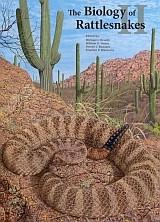

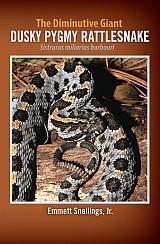

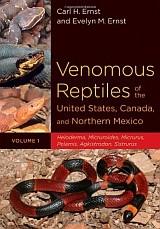

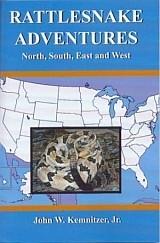

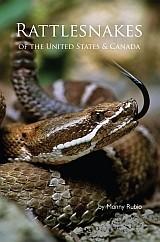

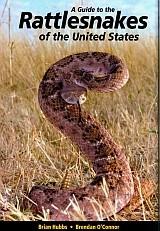

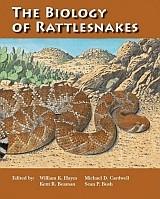

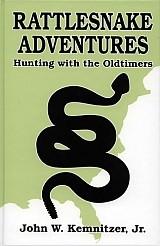

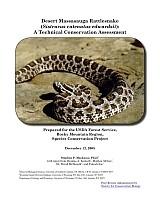

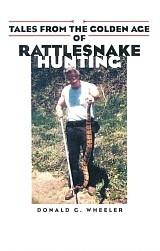



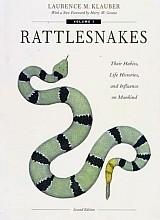

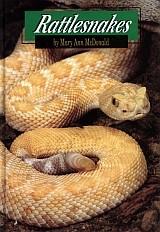

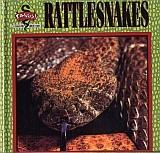

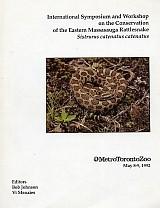

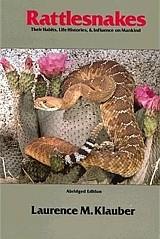

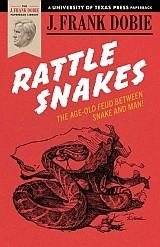

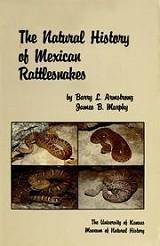

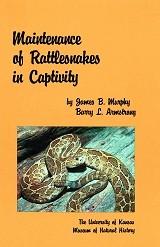

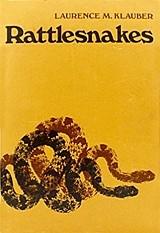

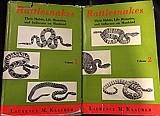











































































































































































|

